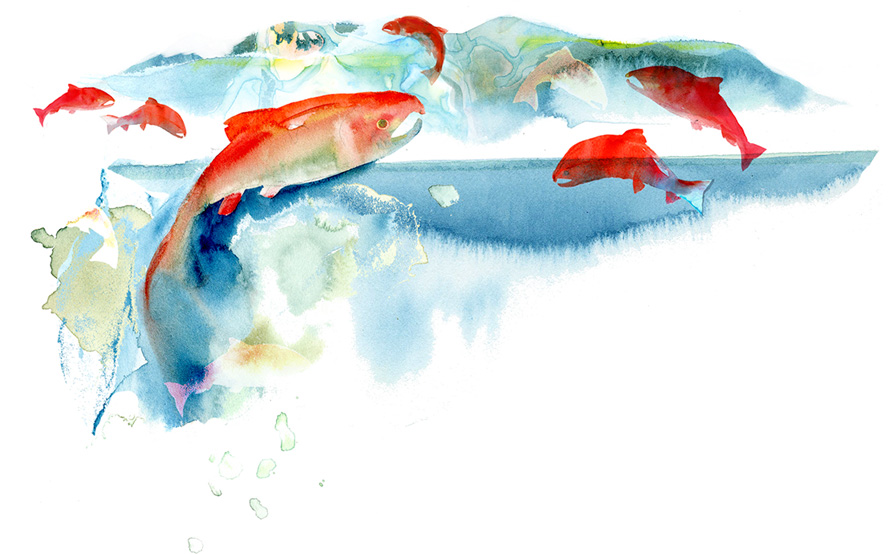
Credit: Annie Patterson/Washington State University. 2016
Salmon exposed to toxic stormwater can die in a matter of hours. But preliminary new findings by Washington State University (WSU; Seattle) researchers suggest that bioretention systems, such as rain gardens, that filter out contaminants from stormwater runoff are key for preventing lethal impacts on fish, according to a WSU press release.
Effective bioretention systems include sand and organic matter like compost and bark.
On April 12, 2016, WSU aquatic toxicologist Jenifer McIntyre described new findings about how coho salmon die when exposed to urban stormwater runoff at the WSU Innovators Lecture in Seattle. Her presentation was titled, Stormwater detox: How natural infrastructure can help save salmon.
“Urban stormwater runoff carries a complex mixture of hydrocarbons, some of which are toxic to the cardiovascular system of animals, into fish habitats,” McIntyre said. “We have seen that stormwater runoff can kill adult coho salmon in urban creeks, and we know that it can cause defects in the heart of developing fish.”
See the latest of the WSU lecture series: The Innovators.
Learn about The Innovators series.
Updated 5/10/16 – A full report by McIntyre supporting these findings was published in the journal Chemosphere. The article, Soil bioretention protects juvenile salmon and their prey from the toxic impacts of urban stormwater runoff, is available open-access.














The type of experimentation needed.
So where’s the report with backup regarding the impact on salmon and evidence that biofiltration adequately reduces pollutant concentrations. With no data available, this doesn’t really help us.
Excellent point, fred@msn.com. The full journal article can be found at http://www.sciencedirect.com/science/article/pii/S0045653514014805. Main story updated as well.
Very interesting!
Are there any studies or tests made that touch on the subject of technologies reducing pollutants transfered by storm water drains? E.g. a filter, addressing the issue in the well/drain, closer to the source of pollution?
Robin, Urban Stormwater Technologies in Perth, Western Australia have developed and tested the Catch Basin Insert (CBI) over a number of years. The CBI captures wind and water carried contaminants “at source”. We provide a means to vastly improve the Stormwater Network and the quality of water it delivers to outfall. Please let me know if you would like further information.